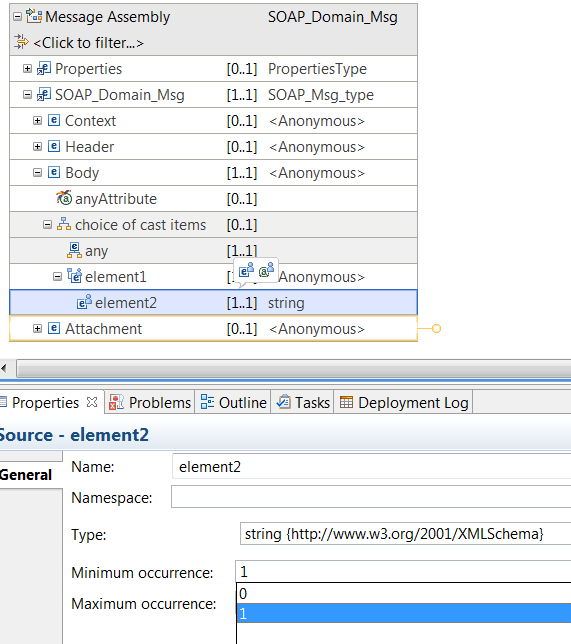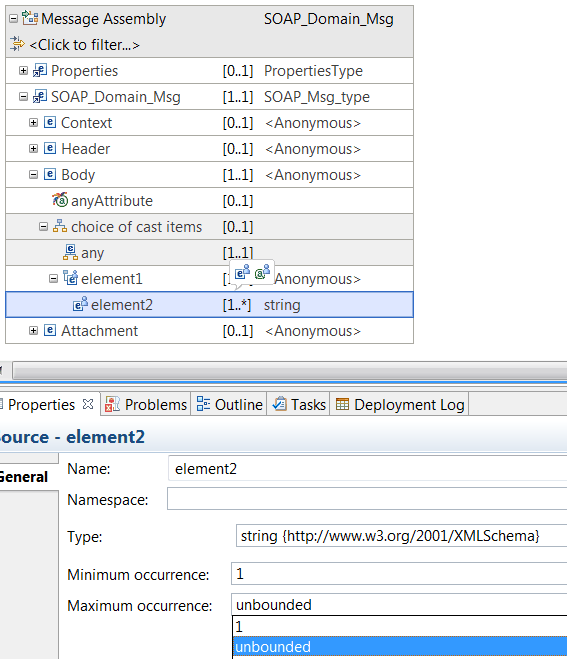Configuring the cardinality of a user-defined element
In a message map, you can set the cardinality of user-defined elements except for JSON arrays and elements that are defined at the xsd:any level.
About this task
- The Graphical Data Mapping editor sets the cardinality for elements that are defined at the xsd:any level based on the internal model of the xsd:any.
- You can configure the cardinality of user-defined elements in the Properties page of the element.
- You cannot set the cardinality of elements that are defined at the xsd:any level because their value is defined by the cardinality set in the message model that provided the xsd:any. Typically, models define the xsd:any cardinality as Minimum occurrence = 0 and Maximum occurrence = unbounded so that user-defined elements defined at thexsd:any level can optionally exist, and optionally repeat. The predefined JSON and SOAP message models use this approach.
- You can change the cardinality of a user-defined element of type <Anonymous> that is not defined at the xsd:any level.
- You can change the cardinality of any child user-defined element that describes a user-defined element of type <Anonymous>.
- If you set the type of a simple user-defined element with an external message model, you cannot change the cardinality of the element in the Properties page. The cardinality of this element is set from the schema model that you reference.
- If you set the type of a complex user-defined element with an external message model, you cannot change the cardinality of its children in the Property pages. The cardinality of these elements is set from the schema model that you reference.
- In a JSON message, the following rules apply for JSON arrays:
- You cannot change the cardinality of a user-defined element of type JSON array that defines a JSON array in the root of a JSON array message.
- You cannot change the cardinality of Item in a JSON array.
- If you change the type of Item to <Anonymous>, you can change the cardinality of any child elements, including JSON array elements.
- An optional element has Minimum occurrence set to 0. An optional element can be omitted from the message.
- A repeating element has Maximum occurrence> 1 to indicate a bounded number of repeats, or Maximum occurrence=unbounded to indicate an unlimited number of repeats. A repeating element occurs more than once in the message, and all the occurrences must appear together without any other elements between them.
Procedure
In the Properties page of a user-defined element, complete the following steps to set its cardinality if the element is not defined at the xsd:any level, and the element is a child of a user-defined element:
Example
When you have a simple or complex user-defined element that is not defined at the xsd:any level, you can configure the cardinality of the element. The following figure shows an input SOAP message with a user-defined element named element2. You create this element by using the Add User-Defined function.
To change the default value of Minimum occurrence, open the Properties page of the element, and select 0 or 1.

To change the default value of Maximum occurrence, open the Properties page of the element, and select 0, 1, unbounded, or enter a number as required.

What to do next
Construct the transforms to map the data you model. For more information, see Choosing a transform to map repeating elements or Specifying a transform (mapping operation).